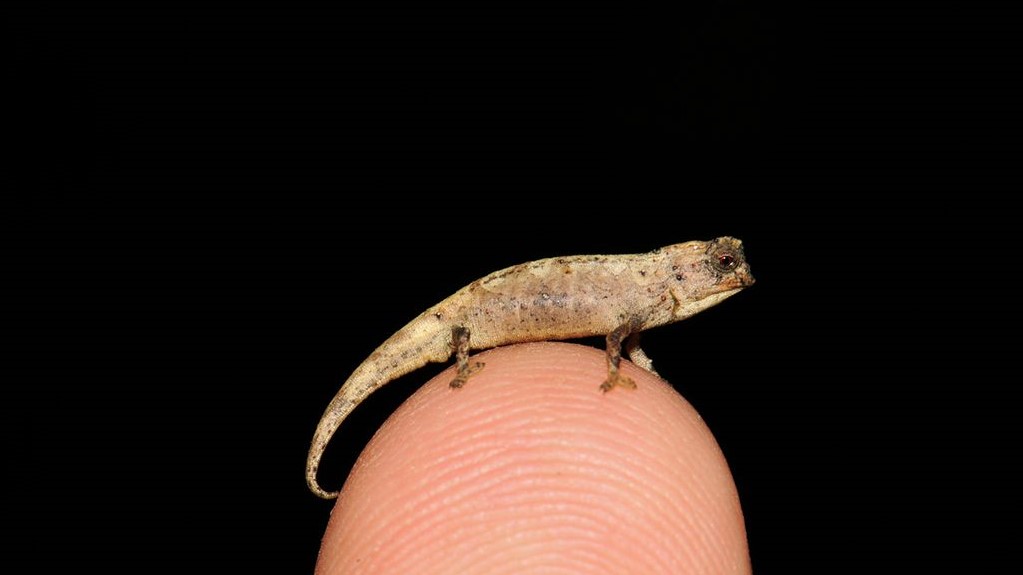MADAGASCAR, East Africa – A new miniature species of chameleon where the male is much smaller but has unusually large genitals in order to have sex with the much larger female has been discovered during a recent research expedition in Madagascar.
An international team of researchers, led by the Bavarian State Collection of Zoology from the German city of Munich, discovered the bizarre chameleon in the North of Madagascar, East Africa.
The discovery was announced on Thursday and published in the open-access Journal of Scientific Reports.
The joint team of scientists named the new species Brookesia nana.
When asked about the inspiration behind the name, Frank Glaw, curator of Herpetology at the Bavarian State Collection of Zoology and lead author of the study, said, “The inspiration was, of course, the smallness of the species.”
“The first species of these mini chameleons was discovered as early as 1893 and named Brookesia minima, which means ‘the smallest’,” he said. “In 2012 we discovered the even smaller species Brookesia micra, which is also named for its tiny size. And in this tradition, we also named Brookesia nana, which can be translated as ‘dwarf’.”
The adult male individual of the newly discovered species has a body length of 13.5 millimeters (0.53 inches), making it the smallest known male of approximately 11,500 known reptiles.
Glaw claimed that the Nano-Chameleon is the smallest known male of all ‘higher vertebrates’. The females, on the other hand, are 19 millimeters (0.74 inches) larger in size than males.
A comparison of the genital size of the Nano-Chameleon and 51 other chameleon species from Madagascar suggested that male Brookesia nana adults have extremely large genitals.
The size of Brookesia nana’s manhood is up to 18.5 percent of its body size.
Researchers said this may be due to a phenomenon called ‘sexual size dimorphism’, which occurs in species where males tend to be smaller than females, meaning relatively larger genitals are required for successful reproduction.
The distribution ranges of most dwarf chameleons such as Brookesia nana are very small, sometimes encompassing areas of just a few hectares.
When asked if the tiny chameleons were returned to their natural habitat, Glaw said, “The two animals (a male and a female) were taken for research purposes. The male has become the holotype for describing the species, the female the paratype.”
He said that such documents are required to scientifically describe and name a species.
The new type of species is usually found in northern Madagascar, Sorata mountains at relatively higher elevations, around 1300 meters above sea level.
“Even though the habitat of the Brookesia nana is facing deforestation, the recent decision to designate that exact territory as protected will hopefully help the tiny chameleon survive,” said Oliver Hawlitschek, Molecular Laboratory Manager, Natural History Centre in Hamburg.
(Edited by Saptak Datta and Ojaswin Kathuria)
The post New Species Of Tiny Chameleon With Large Genitals Found In Madagascar appeared first on Zenger News.

